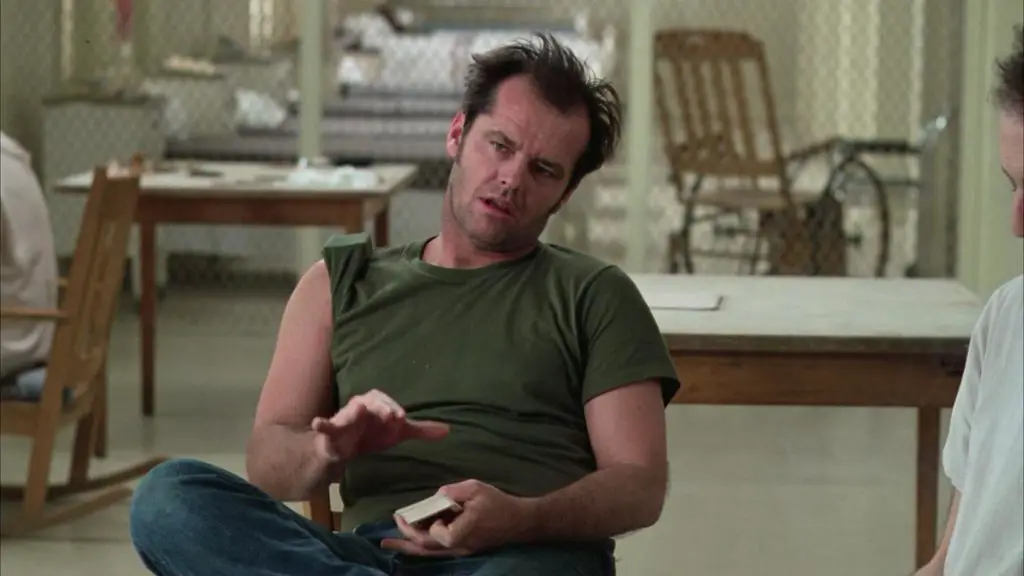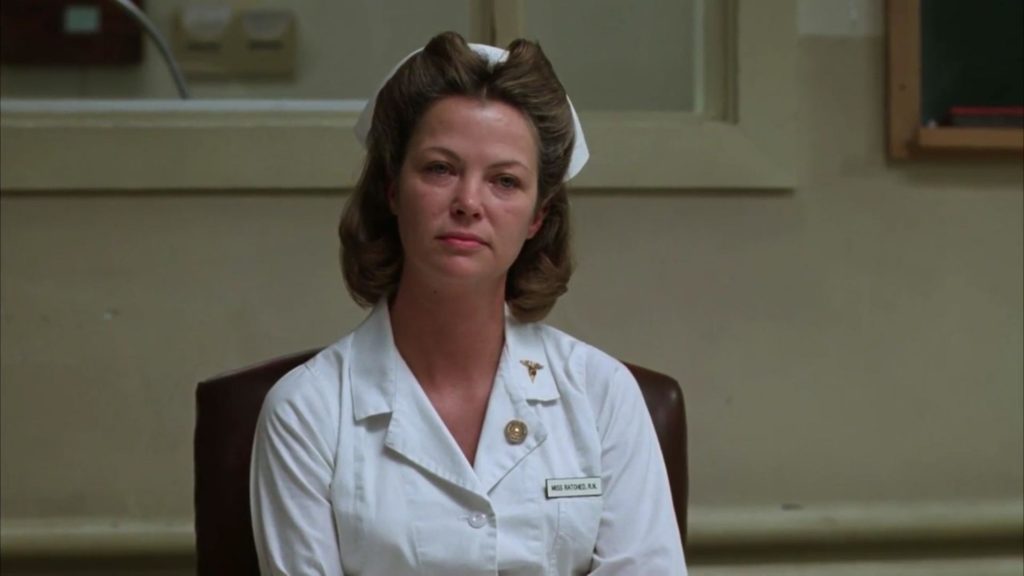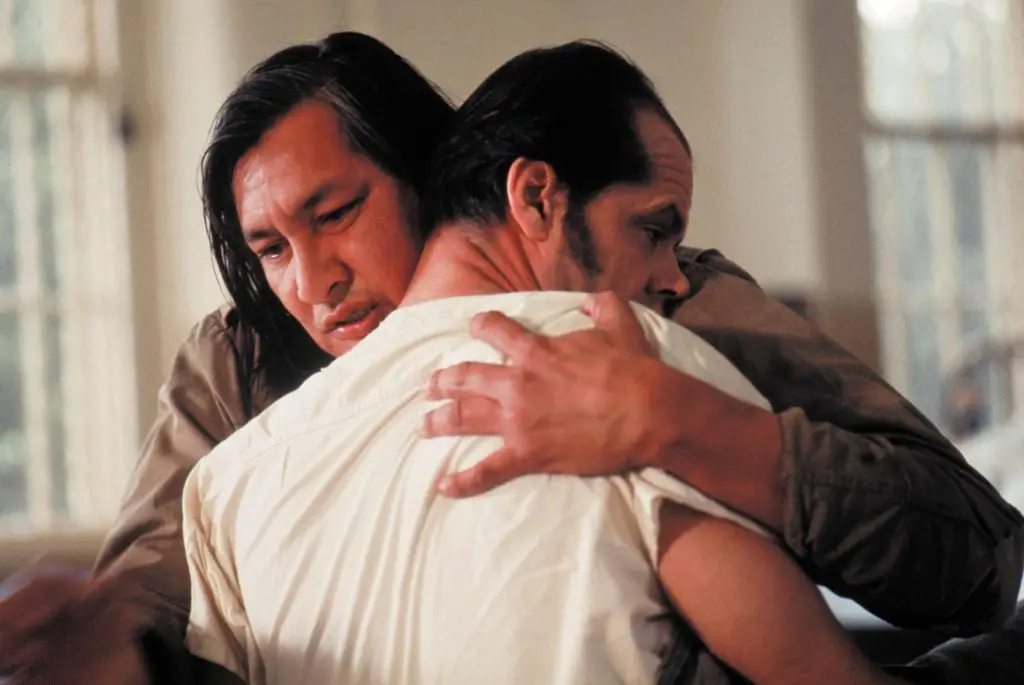One Flew Over the Cuckoo’s Nest: Ideas and Allegories of the Film. The film by Milos Forman did not like the author of the original novel, but became a cult all over the world.
The point of One Flew Over the Cuckoo’s Nest is the value of freedom. The picture tells the rebellious spirit and unwillingness to come to terms with the conditions in which life sometimes puts you.
Country : USA
Genre : drama
Year of production : 1975
Directed by : Milos Forman
Actors : Jack Nicholson, Louise Fletcher, Will Sampson
tagline : “If he’s crazy, what does that make you?”
Awards and nominations : In 1976, the film received an Oscar in 5 nominations.
Film and book
When the Oscars were over, Ken Kesey, the author of the book on which the movie One Flew Over the Cuckoo’s Nest was based, turned off the TV and said, “They ruined everything.”
The writer had several reasons to express dissatisfaction. Firstly, Milos Forman changed the concept of the picture: if Kesey narrated on behalf of the Leader – a deaf-mute Indian suffering from hallucinations, then the rebel McMurphy came to the fore in the movie.
 Jack Nicholson stars as the rebel McMurphy. Frame from the film.
Jack Nicholson stars as the rebel McMurphy. Frame from the film.And secondly, Foreman took a different look at Sister Ratched. In the book, this is not just a cold-blooded and domineering woman – this is an unemotional machine. In the film, she was completely different. And the thing is that Milos Forman considered this story to be his personal. In his book, the director wrote about it like this: “The Communist Party was my sister Ratched, they told me what was possible and what was not.”
Kesey has repeatedly regretted selling the film adaptation of the novel to Kirk Douglas. First, he did a show on Broadway, where he himself played the role of McMurphy, and then transferred the rights to Michael Douglas, who became the producer of Foreman’s picture.
What is the movie about?
The content of the movie “One Flew Over the Cuckoo’s Nest”
70s of the twentieth century, USA. In a mental hospital, everything goes on as usual: sterile walls, a routine of taking drugs and playing cards, watching the news on TV, eating and sleeping.
The routine is controlled by an autocratic ruler – Sister Mildred Ratched. An iron lady with rope nerves, she is an exemplary worker. She is one of those who is always guided solely by “good intentions.” And she tortures her charges. The patients are scared. Those who tried to protest are waiting for a session of electroshock therapy …
 Louise Fletcher played the role of Mildred Ratched’s sister. Frame from the film.
Louise Fletcher played the role of Mildred Ratched’s sister. Frame from the film.But everything changed when a certain R. P. McMurphy appeared on the threshold of the clinic. He is a criminal. In order not to work in a correctional institution, he decided to portray insanity. McMurphy is sincerely glad that he got into the clinic. But he did not have long to rejoice. He soon realized that he was in a worse place than prison.
Unable to come to terms with the fact that someone subscribes to this voluntarily, the newcomer makes his own adjustments to the life of a quiet hospital. He manages to rally several people around him. Harding, “Chief” Bromden, Billy Bibbitt, Charlie Cheswick, Colonel Matterson and Martini are unhappy with the tyranny, but before they were frightenedly silent.
Thus began the story of the confrontation between two wills and two worldviews … A story that could not end in anything good.
One Flew Over the Cuckoo’s Nest Ending explanation
Toward the end, McMurphy deliberately provokes Sister Ratched and then commits violent acts against her. He is recognized as violent and a special “treatment” is prescribed – a lobotomy. One of the patients, the silent Leader, refusing to accept the fact that the freedom-loving “Mac” is doomed to exist in “vegetable mode”, kills him. After that, he, the only one of all the patients, escapes from the hospital.
On the one hand, the explanation of the ending looks like this: a strong person has the right to freedom. Realizing his strength, this man kicked down the doors and went free. But the film also has a hidden meaning.
 Will Sampson as Chief Bromden, Jack Nicholson as McMurphy. Frame from the film.
Will Sampson as Chief Bromden, Jack Nicholson as McMurphy. Frame from the film.It would seem that the main idea of the painting “One Flew Over the Cuckoo’s Nest” is the struggle of a free individual against the System. But the problem is that all the characters in the film were free: they came to the clinic themselves and could leave at any moment. Against this background, the meaning of the ending of the film “One Flew Over the Cuckoo’s Nest” looks somewhat different.
Why didn’t anyone leave the clinic before McMurphy came along? Because the heroes understood: they are sick and they need help. That is, they needed the control and order provided by Nurse Ratched. It is easy to draw an analogy: “order in the state is ensured by the club of a policeman.” McMurphy is the epitome of fighting for the sake of fighting: he didn’t understand the purpose or the consequences of his actions. Aimless actions do not lead to anything good.
Freedom without responsibility is just chaos. McMurphy could not say what he would do with his freedom (he only appreciated it when he lost it, and, in principle, he himself was to blame for this). He perfectly saw and understood that “this is not possible”. But he couldn’t say “how to”. He took off, not knowing where he was going to land. He suggested doing the same to the others. Only the Leader listened to him. What is waiting for him? Unknown.
The meaning of the film One Flew Over the Cuckoo’s Nest
The meaning of Milos Forman’s “One Flew Over the Cuckoo’s Nest” lies on the surface. His painting is an allegory for the state as an apparatus of violence and repression. He quotes exactly St. Augustine, who once said: “The state is a human creation, its purpose is temporary, it is created by violence and is maintained by coercion.”
And “One Flew Over the Cuckoo’s Nest” is an allegory for a society that, despite all the efforts and aspirations for freedom, is forced to live in the existing system of complete control of the individual.
The essence of the film is to demonstrate the model of such a society. Each of the characters in the picture personifies the different social roles of people in society. Sister Ratched is the State. More precisely, it is part of the System, which, with the outward appearance of care, governs society through an authoritarian order.
One of the patients, Dale Harding, is a typical man of the system. He lives by her rules and does not accept any changes, because he wants to exist in his comfort zone. He is ready for change, but only as long as the system allows him to do so.
 William Redfield as Dale Harding, Jack Nicholson (McMurphy) and Sidney Lassick as Charlie Cheswick. Frame from the film.
William Redfield as Dale Harding, Jack Nicholson (McMurphy) and Sidney Lassick as Charlie Cheswick. Frame from the film.Billy is a typical victim. He is suppressed not only by the state, but also by the environment in the person of his mother. McMurphy for him is an external spokesman for his deepest protest. He could not go beyond the System, he was too weak for that. His attempt ended tragically.
Charlie Cheswick is a weak-willed and weak-willed person, suppressed by the state and relegated to its backyards. The leader, pretending to be deaf and dumb, voluntarily remains within the framework of the System, and remains unnoticed by it. The rest of the inhabitants of the clinic are a typical gray mass, making decisions depending on the circumstances.
McMurphy is a passionate person, ready for decisive action and not wanting to be part of such a system. From the point of view of the System itself, he is a marginal and dangerous element.
The characters in One Flew Over the Cuckoo’s Nest voluntarily accept the rules of the game imposed on them. An attempt to defend their interests comes down to ordinary consumption. Of all the heroes, only the Leader could cross the line.
The main idea of the film “One Flew Over the Cuckoo’s Nest” sounds like this: The system is primarily in the head, but it can be broken by knowing the nature of freedom as one of the main principles of human existence.
There is another interpretation of the picture. McMurphy told everyone he wanted to run away, and that’s why he didn’t succeed. The leader, without telling anyone about his plans, at the very end of the film said “I am ready” and, acting on the principle of “Here and now”, left the hospital.
We are talking about excess potential – when you prepare for a long time and really want it, the event does not occur. There is such a psychological trap: talking about his plans, a person gets pleasure, as if he had already done everything he wanted. Therefore, one of the meanings of the film may be in the phrase: “Don’t tell anyone about your plans.”
The meaning of the name
“Who is from the house, who is in the house, who is over the cuckoo’s nest…” McMurphy says these words from the children’s counting rhyme.
To understand the meaning of the name of the picture, you need to understand that “Cuckoo’s Nest” is the slang American name for clinics for the mentally ill. The original title of the book (and movie) is “ONE FLEW OVER THE CUCKOO’S NEST”. “Nest” means not only “nest”, but also “shelter”. “Cuckoo” is not only a cuckoo, but also “cuckoo”, that is, a mentally ill person.
Flying over such a place without landing means gaining freedom. That was what McMurphy was trying to do—and that was where he wanted to take his comrades.
By the way, Ken Kesey became a real icon of the Flower Children movement both in the USA and all over the world – wherever the ideas of individual freedom gained popularity and support.
 Frame from the film.
Frame from the film.Similar films
Here are some pictures similar in meaning to “One Flew Over the Cuckoo’s Nest”:
- Awakenings (USA, 1990). The protagonist, a doctor, tries to “awaken” patients suffering from a rare disease, using experimental drugs;
- K-PAX (Germany, USA, 2001). Once a strange patient enters a psychiatric hospital, claiming that he is a representative of an extraterrestrial civilization;
- Dead Poets Society (USA, 1989). An eccentric freethinker teacher makes his students think for themselves.







